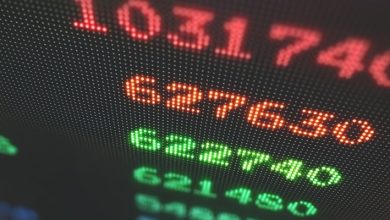How to Use Technical Analysis to Time Your Crypto Trades

- Understanding the basics of technical analysis in cryptocurrency trading
- Identifying key technical indicators to analyze market trends
- Utilizing chart patterns to predict future price movements
- Implementing support and resistance levels for strategic entry and exit points
- Utilizing moving averages to gauge momentum and trend direction
- Incorporating volume analysis to confirm market trends and signals
Understanding the basics of technical analysis in cryptocurrency trading
When it comes to cryptocurrency trading, technical analysis is a crucial tool that can help traders make informed decisions. Understanding the basics of technical analysis is essential for successful trading in the volatile crypto market.
Technical analysis involves analyzing historical price data and market trends to predict future price movements. By studying charts and indicators, traders can identify patterns and signals that may indicate when to buy or sell a particular cryptocurrency.
Some of the key concepts in technical analysis include support and resistance levels, moving averages, and chart patterns. Support levels are price points at which a cryptocurrency is expected to stop falling and potentially reverse its trend, while resistance levels are price points at which a cryptocurrency is expected to stop rising.
Moving averages are used to smooth out price data and identify trends over a certain period of time. Chart patterns, such as head and shoulders or triangles, can also provide valuable insights into potential price movements.
By mastering the basics of technical analysis, traders can improve their chances of making profitable trades in the cryptocurrency market. It is important to combine technical analysis with other forms of analysis, such as fundamental analysis, to make well-rounded trading decisions.
Identifying key technical indicators to analyze market trends
One of the essential aspects of using technical analysis to time your crypto trades is identifying key technical indicators that can help you analyze market trends effectively. These indicators are crucial tools that can provide valuable insights into the price movements of cryptocurrencies, allowing you to make more informed trading decisions.
Some of the most commonly used technical indicators in crypto trading include moving averages, relative strength index (RSI), and Bollinger Bands. Moving averages help smooth out price data to identify trends over a specific period, while RSI measures the speed and change of price movements to determine overbought or oversold conditions. Bollinger Bands, on the other hand, indicate volatility and potential price breakouts.
By incorporating these technical indicators into your analysis, you can gain a deeper understanding of market trends and patterns, enabling you to time your trades more effectively. It’s essential to consider a combination of indicators to get a comprehensive view of the market and make well-informed decisions.
In addition to these key technical indicators, it’s also crucial to pay attention to other factors such as market sentiment, news events, and overall market conditions. By combining technical analysis with a holistic approach to market analysis, you can enhance your trading strategy and increase your chances of success in the highly volatile world of cryptocurrency trading.
Utilizing chart patterns to predict future price movements
One of the key tools in technical analysis is the utilization of chart patterns to predict future price movements of cryptocurrencies. By analyzing historical price data and identifying patterns in the charts, traders can gain insights into potential future price trends.
There are several common chart patterns that traders use to make predictions, including head and shoulders, triangles, flags, and pennants. These patterns can indicate whether a cryptocurrency is likely to continue its current trend, reverse direction, or consolidate before making its next move.
For example, a head and shoulders pattern consists of three peaks, with the middle peak being the highest. This pattern typically signals a trend reversal, with the price likely to move in the opposite direction after the pattern is completed. Traders can use this information to time their trades accordingly.
Triangles, on the other hand, can indicate a period of consolidation before a breakout in price. There are symmetrical triangles, ascending triangles, and descending triangles, each with its own implications for future price movements. By recognizing these patterns, traders can anticipate when to enter or exit a trade.
Flags and pennants are also common chart patterns that can provide valuable insights into future price movements. Flags are rectangular-shaped patterns that slope against the prevailing trend, while pennants are small symmetrical triangles that form after a strong price movement. Both patterns typically signal a continuation of the current trend.
Overall, utilizing chart patterns in technical analysis can help traders make more informed decisions about when to buy or sell cryptocurrencies. By studying historical price data and identifying patterns in the charts, traders can gain a better understanding of potential future price movements and improve their timing of trades.
Implementing support and resistance levels for strategic entry and exit points
One effective way to enhance your crypto trading strategy is by implementing support and resistance levels to identify strategic entry and exit points. Support levels are price levels where a downtrend can be expected to pause or reverse, while resistance levels are price levels where an uptrend can be expected to pause or reverse. By analyzing historical price data, you can identify these key levels and use them to make more informed trading decisions.
Support levels act as a floor for the price of a cryptocurrency, preventing it from falling further. Traders often look to buy at or near support levels to capitalize on potential price bounces. On the other hand, resistance levels act as a ceiling for the price, preventing it from rising further. Traders may look to sell at or near resistance levels to lock in profits before a potential downturn.
By incorporating support and resistance levels into your technical analysis, you can improve your ability to time your trades effectively. These levels can serve as valuable indicators of when to enter or exit a trade, helping you maximize your gains and minimize your losses. Keep in mind that support and resistance levels are not set in stone and may shift over time as market conditions change, so it’s important to regularly monitor and adjust your trading strategy accordingly.
Utilizing moving averages to gauge momentum and trend direction
One of the most popular technical analysis tools used by traders to time their crypto trades is moving averages. Moving averages help traders gauge the momentum and trend direction of a cryptocurrency, allowing them to make more informed trading decisions. By utilizing moving averages, traders can identify potential entry and exit points in the market.
Incorporating volume analysis to confirm market trends and signals
When it comes to timing your crypto trades using technical analysis, incorporating volume analysis can be a valuable tool to confirm market trends and signals. Volume analysis looks at the amount of trading activity in a particular asset, giving traders insight into the strength and sustainability of a price movement.
By analyzing volume alongside price movements, traders can better understand the level of market participation and whether a trend is likely to continue or reverse. High volume during a price increase, for example, can indicate strong buying pressure and validate an upward trend. Conversely, low volume during a price rally may suggest weakness in the trend and potential for a reversal.
Volume analysis can also help traders identify significant levels of support and resistance. For instance, a breakout above a key resistance level accompanied by high volume can signal a strong bullish sentiment and potential for further price appreciation. On the other hand, a failure to break resistance with low volume may indicate a lack of conviction among traders and a possible reversal.



